In the early days of kayak fishing, stealing a milk crate from behind a convenience store was a rite of passage. Today, there are dozens of options from airtight to super light. A crate holds tackle, tools, lunch and liquid refreshment. Options range from lightweight milk crates to sectioned tackle stations pimped with gear tracks, lights, latches and hatches. Here are five questions to answer when choosing a crate.
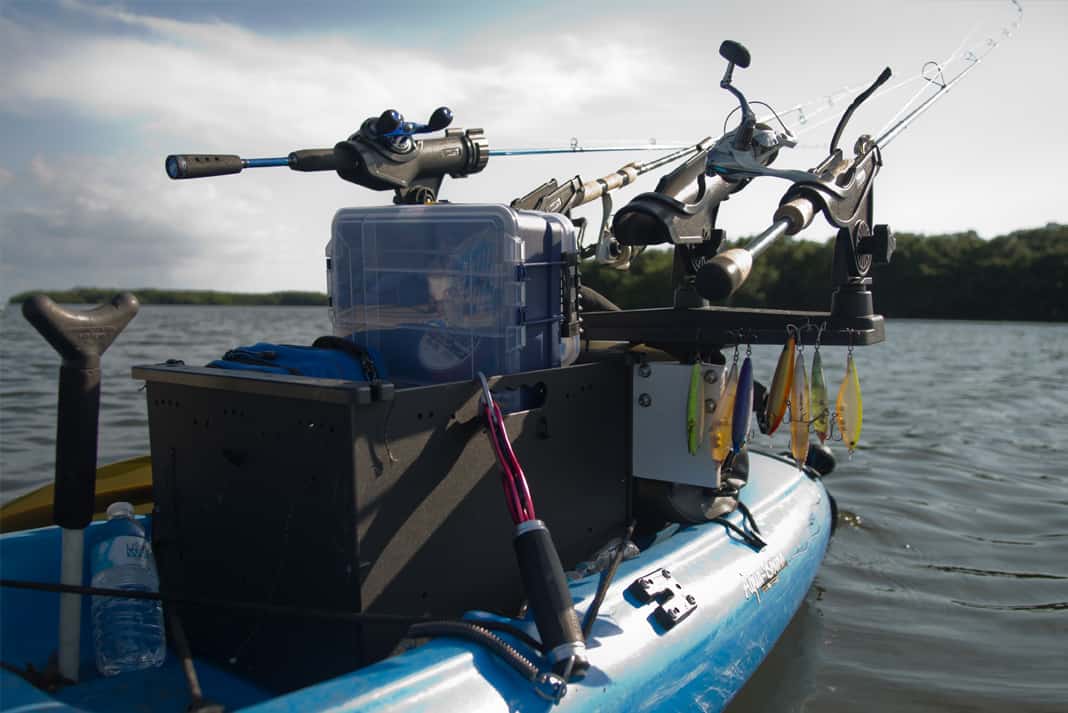
1. How much space is available?
Measure the tankwell behind the seat. Crates come in two sizes: 12 by 16 inches and 12 by 12 inches.
2. How much protection do you need?
A wide-open crate is lighter and easier to access. A crate with a solid lid and sides is heavier but offers more protection. Consider the prevailing weather conditions.
If you fish bluebird days, a lighter, open crate with drybags and waterproof boxes may be the best bet. Anglers who brave rain and blowing spray may look for a more protected crate.
3. How much gear will you take on the average trip?
Pile up your tackle boxes and tools and consider how it will pack in the crate. Find a similar-sized cardboard box and test load it with your kit.
4. How will I attach the crate?
Many kayaks come with bungees in the tankwell, but straps offer a stronger connection. For best results, use both.
Attach the straps from the crate to a gear track attachment or deck loop. Place the crate close enough to reach but far enough away to keep rods out of casting range.
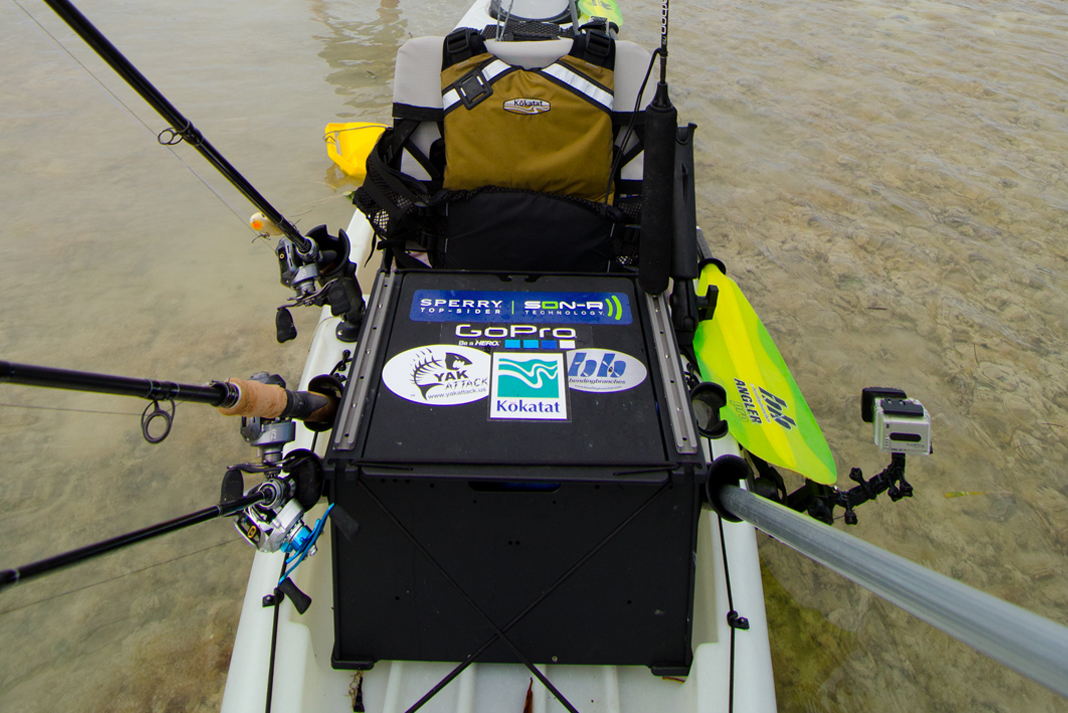
5. What will I carry? How many fishing rods? What tools? Drybags? What can be stored inside the kayak?
Add gear tracks to the crate to accommodate lights and cameras. Keep essential tools like pliers and scissors clipped to the outside of the crate.
Dry storage
One thing is true, no place on a kayak is dry. Even under normal operation, the inside of the hull will accumulate a puddle of water. Dry storage is a premium. Dry boxes and bags will protect gear in the worst conditions. After years of testing, we’ve found not all drybags are dry. Before the first trip, stuff the bag with old clothes and throw it in the shower.
Drybags seal out water by folding over and clipping closed. Waterproof zippers or a press seal adds more protection. Prepared anglers carry three drybags. One five-liter bag holds keys, sunblock, phone, extra sunglasses, headlamp, bug repellant and wallet. Use another five-liter bag as a ditch bag carrying safety gear: personal locator beacon, VHF radio, signal strobe, multi-tool, extra headlamp and extra batteries.
Stuff a 10-liter bag with an extra layer of clothes, rain jacket and sweatshirt. Stick this bag in a bow hatch where it will stay dry and out of the way until the weather changes.
Dry boxes take up more space but offer better protection for cameras and other sensitive gear. Measure to determine if the box will fit inside deck hatch. Sealable, ammo-style boxes are perfect size for standard tackle trays and fit most tankwells. They take less space than a crate and offer reliable dry storage. Preload the ammo box with tackle boxes and tools to make quick work loading the kayak.
Duffles and gear bags are essential for loading and unloading the kayak. Pack large bags with tackle, gear and lunch. Unload the kayak, install seat, electronics, paddle and PFD, then carry food, water and gear in big duffle bags.
Fish Storage
“Where do you keep the catch?” is the most common question from new anglers. It’s possible to dump fish into the kayak hull, but cleaning the slime and stink takes longer than cleaning the fish. A small cooler in the tankwell or bow well and reusable ice packs will hold small fish. For a big catch, strap a soft cooler to the bow and fill it with ice packs.

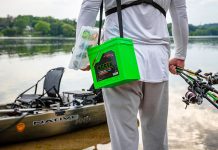
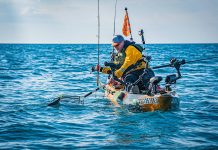
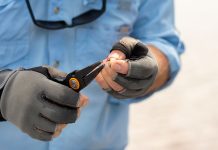



One aspect of having a lot of gear/accessories stowed on the deck or in wells of a fishing kayak is the weight of those compartments, and how high they sit above the deck of the boat…In an inverted capsize that mass hangs low in the water, lowering the center of gravity for your craft which can make it much harder to counter that weight to right your boat. I strongly suggest securing your gear on deck and flipping your boat over to see how hard it is, and where the resistance is. It might result in you ditching some gear, re-packing it for better trim when upside down and even learn what works best for securing to deck in first place… Knowing how your boat/gear will react in a capsize situation is good safety preparedness.
Rods standing behind stop you from casting. My milk crate is loaded with tackle, hand paddle, stringer, water, and bait. Kayak trolling with rod under leg is walleye action
I recommend a PFD with pockets to hold VHF and PLB. If you need them in an emergency they will be readily accessible. If you’re in the water and require their use they will be exactly where you need them. If you ever see the Coast Guard out on patrol you will note all of their safety gear worn on a vest within immediate reach.